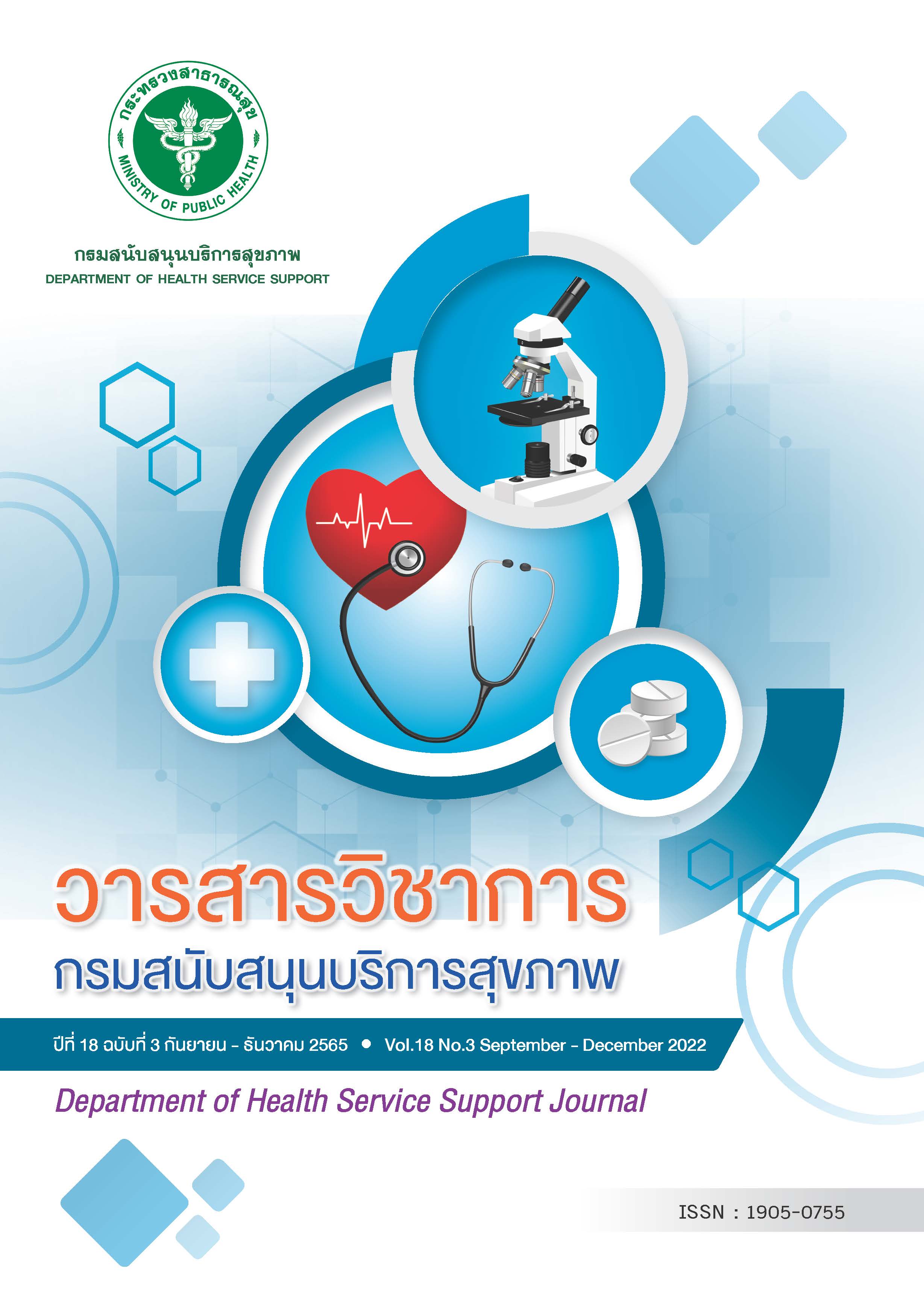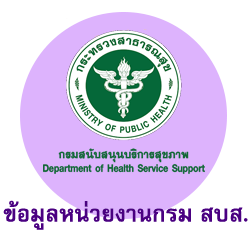A STUDY OF HEALTH SERVICES BUDGETING ALLOCATION PATTERN FOR THAI PEOPLE VIA THE WELFARE STATE FUND IN THAILAND
Keywords:
per capita expenditure, Welfare State Fund, Health Security FundAbstract
Health security for Thai people has been developed for more than 50 years. For instance, in 1972, Thailand established the Compensation Fund primarily aimed at providing security for employee who may be injured from work or suffer illness from work-related disease. After that, several major laws were promulgated including the Decree on Medical Expense Welfare B.E. 2521 (1978), Social Security Act B.E. 2533 (1990) and National Health Security Act B.E. 2545 (2002). In addition, other supplementary health securities were introduced such as Protection for Motor Vehicle Victims Act, health insurance by private sector etc. to ensure that all Thai citizens can have health assurance and access public health services. Over the period, the researcher also observed that there still had certain issues of budget allocation from each source of budget of the government welfare fund of different pattern and method of allocation which may lead to unfair budget allocation resulting in different amount of budget received by each service unit.
Over the past years, allocation of budget on health by each fund/agency may differ from one another. It is therefore necessary to investigate the form, guideline and allocation of budget by each fund. The objectives of this study are as follows: 1) To examine form and method for allocation of budget for public health services by National Health Security Fund, Social Security Fund and civil servant’s medical expenses welfare allocated to service agencies subordinated to the Office of the Permanent Secretary Ministry of Public Health, fiscal year 2021 2) To compare per capita expenditure based on the budget which service agencies have received from other agency or fund charged with the duty to allocate budget for public health services in the fiscal year 2021 and to analyze the difference with current practice in budget allocation by the National Health Security Fund which provide the major source of income of each service agency based on the principle of fairness as a criteria for developing economic models used for comparing the outcomes of budget allocation and 3) To propose budget allocation guideline for public health services to the National Health Security Fund and other funds providing budget for service agency under the Office of the Permanent Secretary Ministry of Public Health. The study applied secondary data collected by the Division of Health Economics and Health Security and data from other relevant agencies e.g. Social Security Office, Comptroller General’s Department, National Statistical Office of Thailand and was divided into 2 parts, namely, 1) Descriptive study regarding concept, pattern and procedure for allocating healthcare expenditure budget for healthcare benefit for civil servant, Social Security Fund and National Health Security Fund and 2) Quantitative analysis by developing econometric model in order to find coefficient between dependent variable and independent variable by Ordinary Least Squares (OLS) method.
Findings from the study suggest that budget allocation in the fiscal year 2021 varied from one fund to one fund to another. With respect to the average per capita allocation of the entire country (excluding Bangkok), it appears that the highest rate of medical expenses welfare was at the average of 5,502.92 baht/person/year followed by such allocated by the Social Security Fund at the average of 2,579.56 baht/person/year and National Health Security Fund at the average of 2,205.02 baht/person/ year, respectively. With respect to the study on fairness according to econometric models which was limited only to the National Health Security Fund due to sufficient data, it reveals that there had certain unfairness in per capita budget allocation (OP, IP and PP) based on the fairness models developed the author. There were 4 provinces that could appropriately allocate the budget while 37 provinces were allocated with under-budget and another 35 provinces were, on the contrary, provided with over-budget. Suggestion is made, inter alia, on record of managerial accounting by service units which presently differs from unit to unit as a result of misunderstanding on section of entries which has range of details while the turnover rate of personnel was high. It should have intense development on data entry system and verification by the management at service unit level. According to the analysis of econometric model, it revealed that budget allocation for the fiscal year 2021 had caused number of provinces to acquire overbudget while several provinces gained under-budget. The person in charge should therefore review method of allocation to ensure appropriateness and fairness as much as possible. Lastly, there should have further study on financial position of healthcare service unit for further planning on effective management of government service agency.
References
Ammar Siamwalla. (2001). Universal Health Coverage: Policy Goals. TDRI Report No. 30. Bangkok: Thailand Development Research Institute. (in Thai).
Arthur S. Goldberger. EcinimetricsTheory. New York : John Wiiley & Sons Inc., 1971.
Chueathai, Somyot. (2006). Theory of Law: Philosophy of Law. (2nd Edition). Bangkok: Winyuchon Publishing. (in Thai).
Civil Servant Medical Welfare Manual. (2017). Office of the Treasury Area 8 and the Provincial Treasury Office in Area 8: Suratthani.(in Thai).
Culyer, A. J. (1991). Health expenditures and equity (discussion paper 83, pp.30-67) York, University of York, Centre for Health Economics.
Faamnuayphon, Penit and Suppasit Phannarunothai. (2002). Development of a tool kit to measure health fairness by relying on the community mechanism. Nonthaburi. (in Thai).
Handbook for the people. (2022). The Facilitation of Government Authorization Act, B.E. 2558 (2015). Nonthaburi: Social Security Office Ministry of Labor. (in Thai).
Kitiphat Nonthapatamadul. (1994). Good health for all. Bangkok : Srichai Printing. (in Thai).
Mooney, G (1987). What does equity in health mean?. Copenhagen,University of Copenhagen, Institute of Social Medicine.
National Health Security Office. (2021). Manual of National Health Security Fund Administration. Bangkok: Sahamit Printing and Publishing Company Limited. (in Thai).
Office of Policy and Strategy. (2011). Thai Public Health 2008-2010. Bangkok: Shipping and Parcel Organization Printing House. (in Thai).
Phannarunothai, (2000). Health economics in the era of health system reform. Phitsanulok:
Naresuan University,Health Justice Research and Monitoring Center. (in Thai).
Phannarunothai,Suphasit. (2005). Health fairness: lessons from universal health coverage in Thailand. Documents for academic seminars, Bangkok: The year of publication does not appear. (in Thai).
Teepakorn Jithitikulchai (2021) Developing Sustainable Fiscal Efficiency for the Health Security System and Human Resource Allocation Model for Health : Health Systems Research Institute (HSRI). (in Thai).
Wirot Na Ranong and Anchana Na Ranong. (2002). Monitoring and evaluating the implementation of the project “30 baht treatment All diseases” of the Ministry of Public Health. Thailand Development Research Institute (TDRI). (in Thai).
World Health Organization, THE WORLD BANG (2021). Tracking Universal Health Coverage 2021 Global Monitoring Report, World Health Organization 20, Avenue Appia CH-1211 Geneva 27 Switzerland.
Downloads
Published
How to Cite
Issue
Section
License

This work is licensed under a Creative Commons Attribution-NonCommercial-NoDerivatives 4.0 International License.



